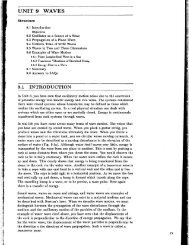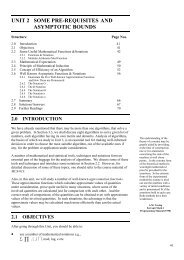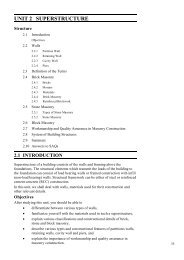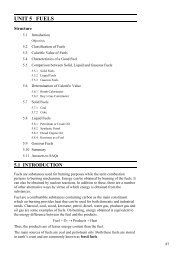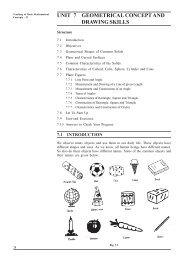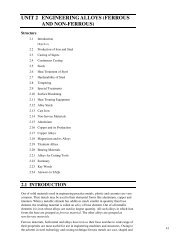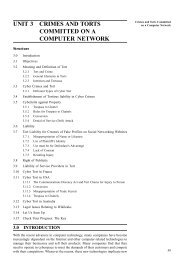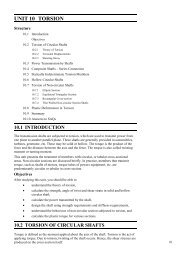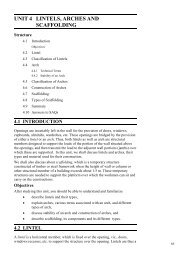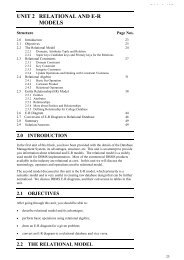unit 1 differential calculus - IGNOU
unit 1 differential calculus - IGNOU
unit 1 differential calculus - IGNOU
Create successful ePaper yourself
Turn your PDF publications into a flip-book with our unique Google optimized e-Paper software.
Consider the function f : N → E defined by f (x) = 2x, where E is the set of<br />
even natural numbers. We can see that f is one-one as well as onto. In fact,<br />
y ⎛ y ⎞<br />
to each y ∈ E there exists ∈ N such that f ⎜ ⎟ = y . The correspondence<br />
2<br />
⎝ 2 ⎠<br />
y<br />
y<br />
y → defines a function, say g, from E to N such that g ( y)<br />
= .<br />
2<br />
2<br />
The function g so defined is called as inverse of f. Since, to each y ∈ E<br />
there corresponds a unique x ∈ N such that f (x) = y only one such function<br />
g can be defined corresponding to a given function f. For this reason, g is<br />
called the inverse of f.<br />
As you will notice, the function g is also one-one and onto and therefore it<br />
will also have an inverse. You must have already guessed that the inverse of<br />
g is the function f.<br />
From this discussion we have the following :<br />
If f is one-one and onto function from X to Y, then there exists a unique<br />
function g : Y → X such that for each y ∈ Y, g (y) = x ⇔ y = f (x). The<br />
function g so defined is called the inverse of f. Further, if g is the inverse of<br />
f, then f is the inverse of g, and the two functions f and g are said to be the<br />
inverse of each other. The inverse of a function f is usually denoted by f – 1 .<br />
To find the inverse of a given function f, we proceed as follows :<br />
Solve the equation f (x) = y for x. The resulting expression for x (in terms<br />
of y) defines the inverse function.<br />
Thus, if ( ) = + 2,<br />
5<br />
x<br />
f x<br />
x<br />
we solve + 2 = y for x<br />
5<br />
5<br />
This gives us x = ( 5(<br />
y − 2))<br />
.<br />
5<br />
Hence f – 1 1<br />
−1<br />
is the function defined by f ( y)<br />
= ( 5(<br />
y − 2))<br />
5 .<br />
1<br />
5<br />
1.3.3 Graphs of Inverse Functions<br />
There is an interesting relation between the graphs of a pair of inverse functions<br />
because of which, if the graph of one of them is known, the graph of the other can<br />
be obtained easily.<br />
Let f : X → Y be a one-one and onto function, and let g : Y → X be the inverse of<br />
f. A point (p, q) lies on the graph of f ⇔ q = f (p) ⇔ p = g (q) (q, p) lies on the<br />
graph of g. Now, the point (p, q) and (q, p) are reflections of each other with<br />
respect to (w. r. t.) the line y = x. Therefore, we can say that the graphs of f and g<br />
are reflections of each other w. r. t. the line y = x.<br />
Therefore, it follows that, if the graph of one of the functions f and g is given, that<br />
of the other can be obtained by reflecting it w. r. t. the line y = x. As an<br />
illustration, the graphs of the functions x 3 and y = x 1/3 are given in Figure 1.8.<br />
y<br />
0<br />
x<br />
Differential Calculus<br />
15




